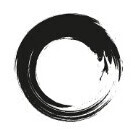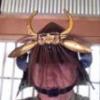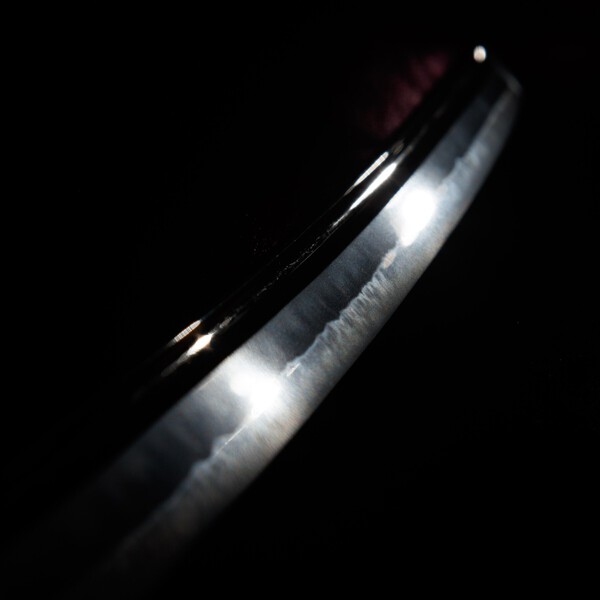-
Posts
665 -
Joined
-
Last visited
-
Days Won
6
Hoshi last won the day on March 21
Hoshi had the most liked content!
Contact Methods
-
Website URL
https://hoshido.substack.com/
Profile Information
-
Location:
CH
Profile Fields
-
Name
CH
Recent Profile Visitors
6,423 profile views
Hoshi's Achievements
-
Hozon or Tokubetsu Hozon, it makes absolutely no difference for me, in my area (Kamakura to Nambokucho blades). - it is relevant for fittings, as it becomes an indicator of importance (as opposed to a mere checklist). - it is relevant for Showa period swords, where TH is rarely awarded. There, I believe it may contain some information about relative Importance. TH is a checklist, and one that keeps on changing. If you learn the checklist, you do not need to get the paper, unless you plan to submit to Juyo. As Ray justly points out, The NBHTK has moved the goalpost with mumei Muromachi blades receiving TH.
-
Don’t restrict yourself too much when looking for a Kamakura period piece. It can take many years to find a good, healthy Kunimune that has textbook characteristics. the vast majority of them are unfortunately worn down, or compromised in some way. Don’t buy a sword because the maker is a “big name” - chances are, what you’re looking at on the open internet are the compromise pieces that don’t get traction in the Japanese market. The gems go quietly to top clients who have a standing order with dealers. Great swords from this period are disappearing to private museums and foundation. Be patient, and take your time to learn and examine great blades.
-
I strongly suggest you get @Ray Singer’s help on this one and follow his recommendation. I can vouch for his character and ethics. The blade is likely quite valuable. It has Nambokucho period aura. Soden-Bizen or Sue-Sa comes to mind. Perhaps a few tens of thousands of dollars. Much less if it’s later work suriage, or if it has unseen flaws. More if it’s from a famous Nambokucho grandmaster. Which is unlikely, as cutting tests weren’t performed on top master blades. In any case you’re looking at ~1 year + significant costs to get it appraised, certified, and restored if it makes sense financially. Best of luck!
-

Mogusa and Adjacent Ichinoseki Schools
Hoshi replied to Zoglet's topic in General Nihonto Related Discussion
The "Nibelungen theory" of Nihonto. The mythical dwarven smiths of the North... For Hoju and related schools, @Jussi Ekholm is your man. Jussi has a deep interest in this school, and I'm sure would know exactly where the key references are to be found, to build a good foundation. -

Trustworthiness of sellers on yahoo Japan
Hoshi replied to JeanEB's topic in Auctions and Online Sales or Sellers
Dear Jeb, As you wisely put it, If it is too good to be true, chances are, it is. Sanjo Munechika... Ko-Bizen Tomonari... For onlookers, beware the lure of the Sirens of Greed. "Come here...gold, I offer you gold...at the price of lead..." "Priceless treasures...that only YOU could find...come, come closer, take the gold..." At best, when you wake up from the drunken, greed-fueled fever, you will realize it was lead all along. You will put your mistakes behind, cut your losses, and gaze upon the steep path of learning ahead, and engage with it in earnest, and with passion. A financial hangover, a blunder on the path. At worst, you will succumb to pride, and convince yourself of your judgement, that you truly, maybe, have found gold at the price of lead. There you will begin your descent into Nihonto Hell. A place antithetical to knowledge, a path of self-deception with only ruin ahead. You will work to convince yourself that a cabal of dark-hooded "experts" have elected themselves above you, for their own gain, to deny your prize. A conspiracy to deny your worth. You will preach, and convince a flock of resentful souls of their own righteousness, and carry their cause. You will fight tooth and nail to spread the immaculate truth, to take down the cabal, and perhaps even setup your own booth to peddle your treasures to followers in the process. Or you may emerge from this fever dream in the Limbo of Nihonto: Relativism. "Whatever" There are no superior sword, there is no excellence, no art. It is all in the eye of the observer. Nothing matters. There is no up, there is no down. There are only perceptions. There are only opinions, and they all matter the same. Lead is gold, to me, and therefore it is true, by virtue of being my "lived experience". Beware out there. -
This is a wonderful topic, and I appreciate all the photos and references being shared. Lovely to hear again from you @Rayhan. Welcome back. I am still not sure myself how utsuri was obtained, but I (weakly) subscribe to the temperature-control theory and single quench, so far at least. Annealing, thermocycling, are two plausible alternative theories. I believe the focus should not be utsuri - but rather, antei - the dark band above the hamon. How was antei obtained, and how does it differ metallurgically from the white-ish band above? (utsuri). I believe this is important, because the utsuri itself is the default jigane state whereas the Antei is where the metallurgical alterations of interest occur. I have not seen a convincing metallurgical analysis comparing the three bands: hamon, antei, and utsuri. This is an important gap. I would be very grateful for a credible reference to come to light. Regarding a photo of utsuri, here is a striking midare-utsuri on a Tokubetsu Juyo blade by Osafune Kagemitsu (photography credit to Ted Tenolds). This is a good base to anchor the conversation. Notice the 3 distinct bands: - Hamon (and the nioi-based substructure forming the nioiguchi and the ashi) - Antei (the dark area above the nioiguchi) - Utsuri (the whitish area above the utsuri)
-
Hi Kevin, The ji is executed in itame mixed with mokume, and although it is denser on one side compared to the other, it is within the normal range of variation. First tip: don't over index on the distinctions between itame, mokume, etc...it's just not that important, in the end. Likewise, don't fixate on minute irregularities in the ji, in Japan nobody really cares. What you want to train yourself to look at (sugata aside): pay attention to the hamon: is it bright and clear?, the nioiguchi: is it consistent and luminous? the quality of the ji: is it lustrous with ample jinie? And the expected midare-utsuri (which cannot be seen on the current photos, alas). You'll notice that the blade's ji is rich in jinie, and is quite lustrous, which is a rarified feature for Nambokucho works. The most important of these qualities is the nioiguchi. It is rather thin, clear, and consistent. Then look at the form of the hamon, you'll recognize that it resembles closely the hamon pattern of his master, Kagemitsu, with an angular and almost kataochi-style gunome. This lets us infer that this is relatively early work of Kanemitsu, before his prime phase where he executes his hamon in a noticeably different way. Pay attention also to the slanting and brilliant ashi that give the hamon depth and clarity. It is a worthy Tokubetsu Juyo blade. Personally, I am more fond of such early Kanemitsu work with the brilliant ashi, and angular kataochi-style gunome, compared to his more mature style. Is it in the upper echelons of Tokubetsu Juyo for Kanemitsu? Not quite, and that is reflected in the price. It is certainly a lovely blade. Hope this helps. Hoshi
-
Hi fellow Swiss, The photos are difficult to interprete, but based on what you have, I'm afraid that they do not conform to Kencho's characteristics in a way that makes me confident in the attribution. Kencho (And Chogi) for that matter, have a different hamon shape and structure. The nie is likewise too intensively expressed (from what I can discern by squinting) in your photos. I can't make pronouncements on the Boshi, as the photos make it difficult to discern what is the hardened area. There is what appears nie kuzure, and an undelineated nioiguchi composed of blotchy nie. The simplest way is perhaps to think of Kencho as being more wild than Chogi, with sharper ups and down, and an overall more nervous appearance, whereas Chogi expressed a more wavy-like, more in the alpha frequency band to take a radio analogy. Kencho by contrast, goes into much higher frequencies of ups and downs. Some blades fall in the middle and can go back and forth. Both smiths were probably close to equal in skill. Kencho is one of the unfairly classified smiths by Fujishiro as Jo-Saku. His Tokubetsu Juyo record would point that he is at least Jo-Jo saku, or even close to Sai-jo saku. Now, this is based on the tradition of attribution, in reality we have only three signed works left by him and they do deviate from the canonical Kencho in significant ways. The Honami judges that did issue kiwame to Kencho are also the unreliable ones, so we don't have a lot to go with. Kencho is really a vibe of Soden-Bizen. Some of his works are truly wonderful though, and some even prefer Kencho over Chogi or Kanemitsu. Regarding the "kizu" folder - the Kirikomi is not what you should be concerned about. There are two Fukure in that blade, one in the ha. This is a signifiant condition issue. Good luck in your search, I would recommend skipping this one. A great Kencho attributed sword, however, is a solid path that I would recommend pursuing. For reference, here is a legitimately excellent Kencho: https://www.sothebys.com/en/buy/auction/2025/important-Japanese-swords-and-armour-from-the-paul-l-davidson-collection/a-soden-bizen-school-katana-attributed-to-kanenaga It's one of the great heights of the Nambokucho period's Bizen tradition. Good luck!
-

Nihonto Substack: The Falling Leaf Sadamune
Hoshi replied to Hoshi's topic in General Nihonto Related Discussion
Happy to hear! Positive feedback is encouraging. If there are enough interested people that follow the substack, it'll keep me motivated to post more research! The Shizu line is fascinating. Did you know a new zaimei Shizu daito was uncovered and passed Juyo Shinsa this year? I'd love to do a writeup on that blade, but the odds to get in-hand and do photography aren't on our side. To each his own. I'm basing my research on the NBHTK's tradition of attribution, and belong firmly into the "Tanobian" school of thought, which is itself extension of Honma Junji's approach. As you know, appraisals on mumei blades are partly specific features, partly quality gradients, depends on the case. For those interested, the best way to dive into it is to buy Markus Sesko's excellent (and ongoing!) translation of the Kanto Hibisho. I can't recommend it enough, it's a rare glimpse into his stream of consciousness. Get it here. Beautiful photos, great write-ups, and in-depth research, this is what I miss most. Hopefully, we can re-create some of the magic of Yuhindo. Best, Hoshi -

Nihonto Substack: The Falling Leaf Sadamune
Hoshi replied to Hoshi's topic in General Nihonto Related Discussion
Thank you! The photography is the work of Ted Tenold (and the copyright owner, photos reused with permission). The photos are from Darcy's original post on Yuhindo.com. -
Hello everyone, I miss everyday being able to go on Yuhindo.com to gaze at magnificent blades, it used to be a "Zen" website where one could just linger surrounded by beauty and knowledge. I memory of my friend Darcy, I started a Substack project where I plan to publish articles when time allows, with in-depth with high-quality research, with the help of friends such as Markus, Ted and others. In the long run, it'll form the basis of a book. My plan to focus on swords that "have stories to tell" and delve on often overlooked topics such as provenance and discussions on attributions. The content is aimed at intermediate-level enthusiasts, but with the help of AI tools it should be understandable by everyone, new or experienced, in the hobby. Here is the first article of the series: https://hoshido.substack.com/p/the-falling-leaf?r=bw6e8 I hope you enjoy. Best, Hoshi
- 19 replies
-
- 20
-

-

-

-

Paul L. Davidson collection up for auction in March
Hoshi replied to Lewis B's topic in Auctions and Online Sales or Sellers
A beautiful tribute @Kotetsu1959 This is what matters, in the end, friendships, sharing, learning and memories that live on. Paul has left a big mark on our field. This auction is a tribute to a lifetime of passion, discovery and careful curation. I wish for this auction to be a big success. -
A few fakes have been discussed lately on YJP. Fake Odachi, fake Awataguchi Kunitsuna - to name a few. None of these are convincing fakes, however. Convincing fakes do exist and - if you remember a few months back - we've had a Go Yoshihiro, and an Awataguchi Kuniyasu from the same 'new' vendor with Juyo papers that were exceedingly good reproductions (or real. re-issued papers). The blades were made as convincing copies, however the photos were 'too good' and it was easy to see the blank hamons and other telltale signs. The fakers put in some real effort, real investment, and achieved a 5M yen cash grab on the Go if I recall correctly. The swords were made to closely ressemble the Oshigata of the Juyo blades, including the nakago, with convincing reshaping and drilling. Now, it returns. This has either inspired a copycat, or it could also be the same 'gang' operating: They learned their lesson with the photos and the setup is now optimized to make it more difficult to tell. https://buyee.jp/item/yahoo/auction/u1175987916?lang=en&rc=yaucc - The papers look real (and match the Zufu). - The blade looks like a good match for the Oshigata (notice the hataraki). - The seller is a newbie that is cleaning up his friend's attacs (so he is naive, hehe). It's all made in a convincing way to attract bargain-hunters that want to buy gold at the price of lead. If you look closely, you will notice that the hataraki are 'painted' with hadori, the Yubashiri becomes a tobiyaki, the dimensions are slighly off, you can't discern the bright nie you'd expect with Sadamune. If you know you know, but it's a very real danger for all the YJP! chasers out there. I get the thrill, but be careful. If its too good to be true, something's wrong.
-
This is the kind of sword we should be discussing on this forum. Great effort @Lewis B lately. You're picking up fast. Your posts are interesting, which is motivating a few of us to contribute more to sharing knowledge. RE: The Yoshifusa. As @Gakusee said, it is in his early Ko-Bizen style, which is more suited for an advanced collector, perhaps as a second Yoshifusa, to provide an illustration of the migration movement from Ko-Bizen to Ichimonji in the early to middle Kamakura period. It is understandably somewhat arcane, so it can be quite difficult to find a market for such a blade. The price is reasonable given its extreme rarity, but it's far from an easy one for which to find a good home. In general, the more you deviate from the preferred style, the more your market narrows. For Yoshifusa, this preferred style - and most common style - is the glamorous and complex choji that vary wildly. Although, keep in mind, we are talking ultra-rarities there, with 31 works extant works that can even be exported outside Japan. So, this Yoshifusa in Ko-Bizen style is a rarity amongst rarities, with 4 exportable works in Ko-Bizen deki. Nonetheless, the glamorous Yoshifusa is most sought after, and I think this needs no academic explanation...the flamboyance is simply spectacular, and wildly considered to be the peak of Ichimonji's glamorous style, everyone just "gets it". For other smiths, their rare styles are their preferred styles. Take Nagamitsu, he has less than a handful of blades in the style of his father, but the few that can be found tend to be Kokuho or Jubun and considered to be his supreme masterworks. Keep up the passion!
-
Truth is we don't know. The author has an axe to grind about the treatment of Gunto and the requirements that art swords are made according to "traditional methods" which are defined as using Tamahagane, etc. With this caveat in place, he's right to point at the massive gap in scholarship when it comes to the nature of the iron used prior to the Muromachi era. The 'state of the art' metallurgical studies usually analyze a few low value blade from the Muromachi period. You can't draw conclusions on such tiny samples with non-representative blades and extend this to the golden age of Nihonto, the Kamakura period. Grain of salt yes, but would personally love a properly calibrated XRF-bases study, with multipoint measurements, over a vast collection of treasures. For now, we just lack in-depth scholarship in the topic.







